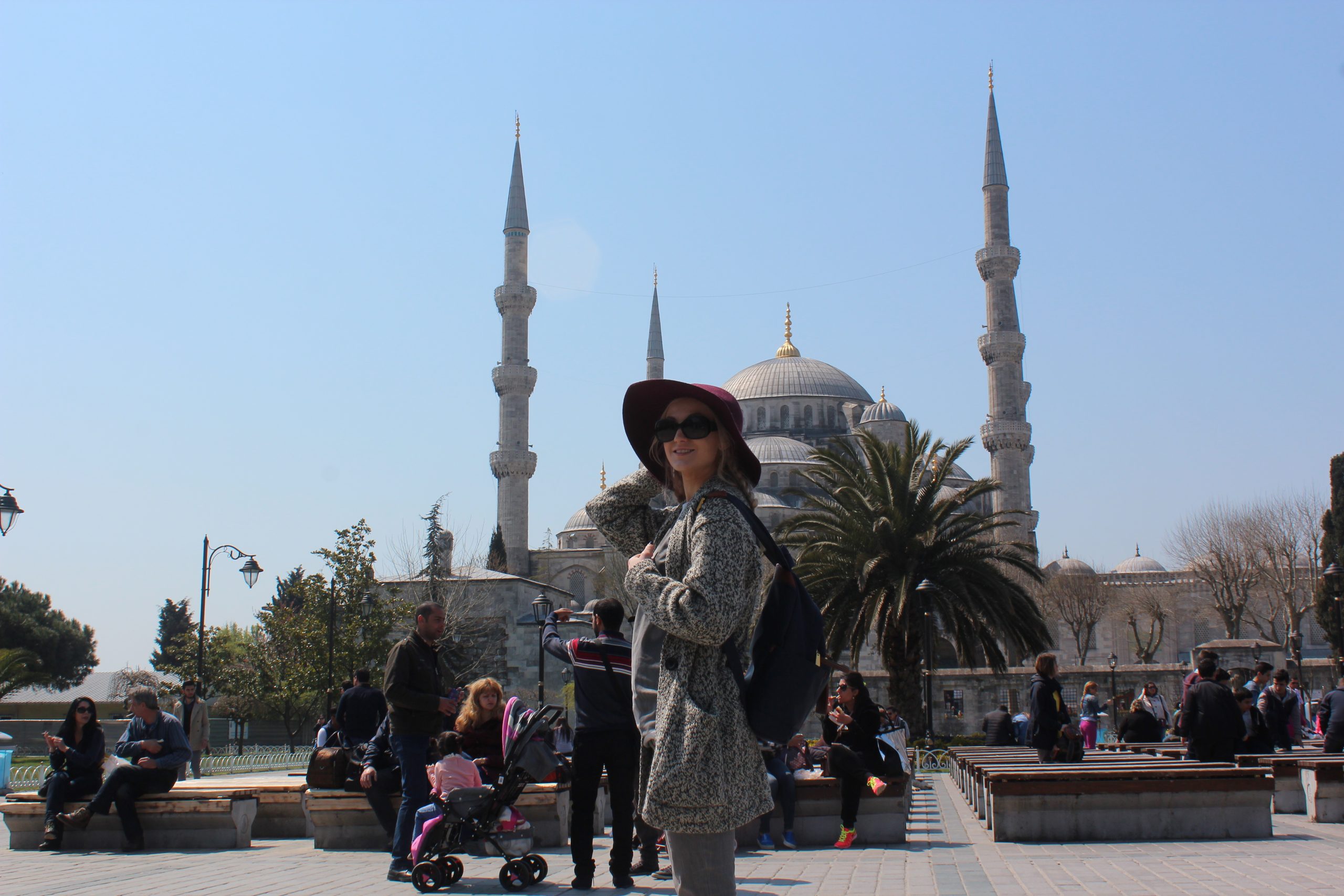
Blue Mosque,Istanbul-What You Need To Know Before You Visit
Many of the world’s most famous architectural monuments were erected in celebration of great military victories. In contrast, the Sultan Ahmed Mosque, also known as the Blue Mosque, was built after Turkey suffered several major defeats during the early 1600s.
How to visit the Blue Mosque in Istanbul
As Sultan Ahmet did now know how to protect his empire or to restore its power and fortitude, he turned – as a last, desperate measure – to the powers of heaven. Hoping to atone for his sins and gain the favor of Allah, he decided to set up a dialogue with the Almighty. In the Muslim world, everyone knows the best way to do so is to build a mosque.
In order to build a mosque that would be worthy of God Himself, the Sultan called on the aid of one of the greatest architects of the time, Zedefkar Mahmet Agu. They soon decided that the best place to build the mosque was where one of the palaces of the Byzantine emperors was currently erected. So the square on the opposite side of the Hagia Sophia was completely cleared, leaving no trace of the Byzantine palace, its unique architecture, or its many magnificent buildings.
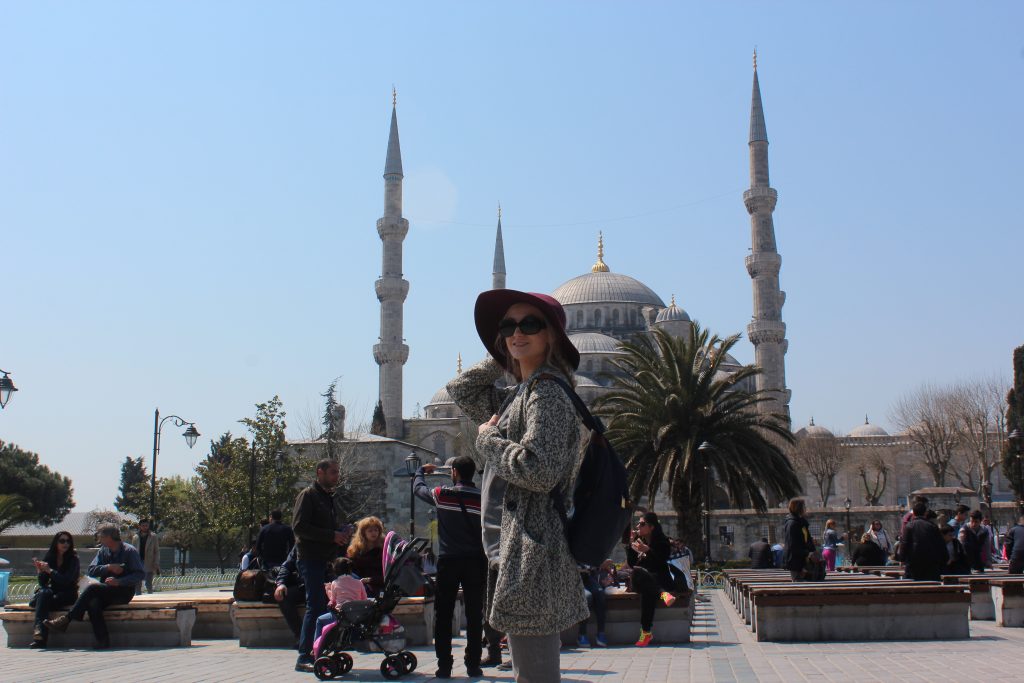
It’s impossible to say whether the Sultan was more focused on pleasing Allah or surpassing the beauty of all other buildings of the time, but he certainly succeeded in the second. When complete, the Blue Mosque was a true masterpiece, eclipsing buildings all over Turkey, including those in Constantinople.
On three sides, you could find huge gates leading to the courtyard of the mosque, which was surrounded with arcades and domes. The western gate was made for the Sultan alone so that he could ride to it on horseback. A heavy iron chain was hung in the upper part of the gate so that the Sultan would have to bow his head in humility every time he arrived to face the divine.
Blue Mosque : the Six Minarets
The Blue Mosque has six minarets, which is rather uncommon for a building of this type. According to a version of the story, the architect apparently misheard the Sultan’s instructions. Rather than head the word “gold,” he heard the word “six,” which is a consonant in Turkish. Of course, it’s difficult to believe such a story considering the Sultan surely monitored the construction, but it’s a funny tale nevertheless.
Among the clergy, however, resentment arose over the Sultan’s pride. Such a quantity of minarets, after all, was only found in the Forbidden Mosque at Mecca. Rather than change his design, the Sultan took another unique approach to solve the problem: he paid for the construction of the seventh minaret at Mecca.
Inside the Mosque
Upon stepping inside the mosque, it is rather easy to see where it got its nickname. On the lower tiers alone, the interior is lined with over 20,000 ceramic tiles, all decorated in handmade, light blue colors. When you enter the main area, you will find yourself in a vast space full of opulent and almost-intimidating splendor.
At first glance, it almost seems as if the light is dull or muffled. At the same time, however, there is enough sunlight for the tiles to twinkle and dance. It is truly an indescribable sight. The architect managed to achieve this effect with the help of a large number of stained-glass windows. The flooring is covered by a chic soft carpet of garnet hue, painted with traditional floral patterns.
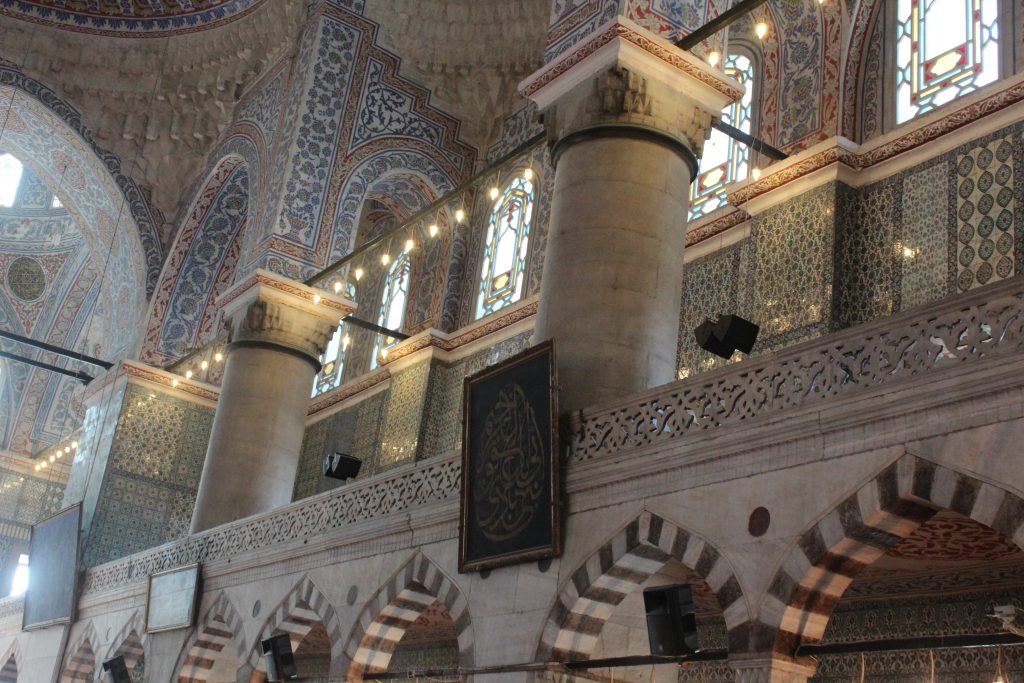
There are different zones inside the mosque, some with stronger light and some with softer light. This creates the illusion of volume. Picture it: fifty burning candles in a dark room without central lighting, each of them illuminating a single subject. This is exactly the impression visitors to The Blue Mosque have.
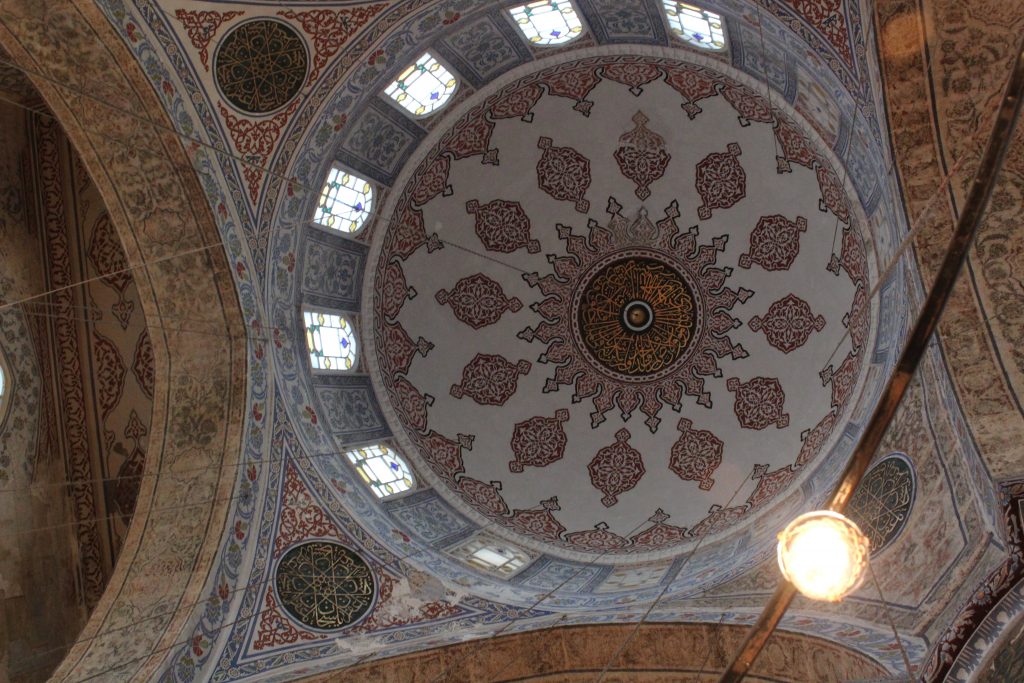
Requirements for visiting the Blue Mosque
While inside The Blue Mosque, it is important to remain silent and not to approach people who are at prayer. It is also forbidden to take photographs with a flash. Furthermore, you must ensure that none of the men inside are in the frame of your photo. It’s also worth noting that Friday is a holy day for Muslims, so The Blue Mosque will close at 13:30 that day.
Blue Mosque is located in Sultanahmet . Doors open for prayer from 5:30 onwards. When prayer is in session, the temple cannot be photographed for any reason. Also, women are asked to remain in a designated place outside the large hall during this time.
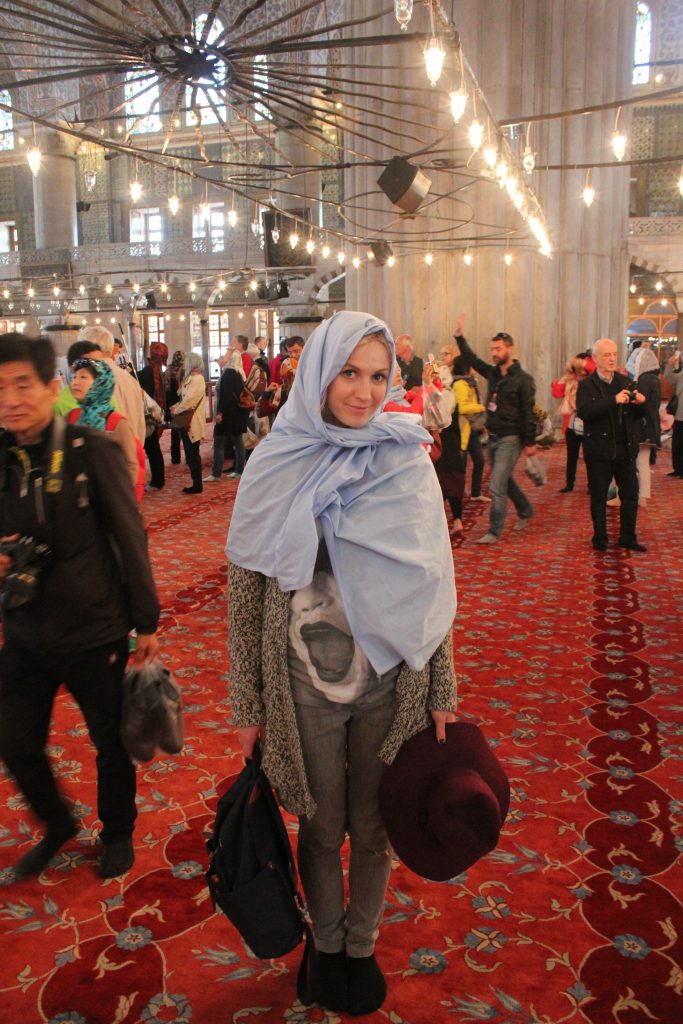
As far as clothing requirements go, women should have their shoulders, arms, elbows, knees, and head covered at all times. Men are not allowed shorts, but can otherwise dress normally. When inside, you are not allowed to talk loudly, go over fences, or kiss. You must also be sure to take off your shoes to preserve the pristine nature of the inside. Bags with shoes can be carried with you or left at the entrance. For women who lack proper coverings, scarves and skirts are available for free but must be returned.
Tourists are also asked to only walk along the edges of the main hall, leaving the center open to worshippers. You must also understand that your time in the Mosque may be limited to the beginning of the next prayer. One of the best times to arrive is late afternoon, as there will be fewer tourists and you will have more time to explore.
Entrance is free for all visitors, but donations are suggested.
You can examine a replica of the mosque located on the patio once you see the building in person. This will allow you to see many features of the domes and architecture that would otherwise require a bird’s eye view.
Another breathtaking mosque in Istanbul is Suleymaniye


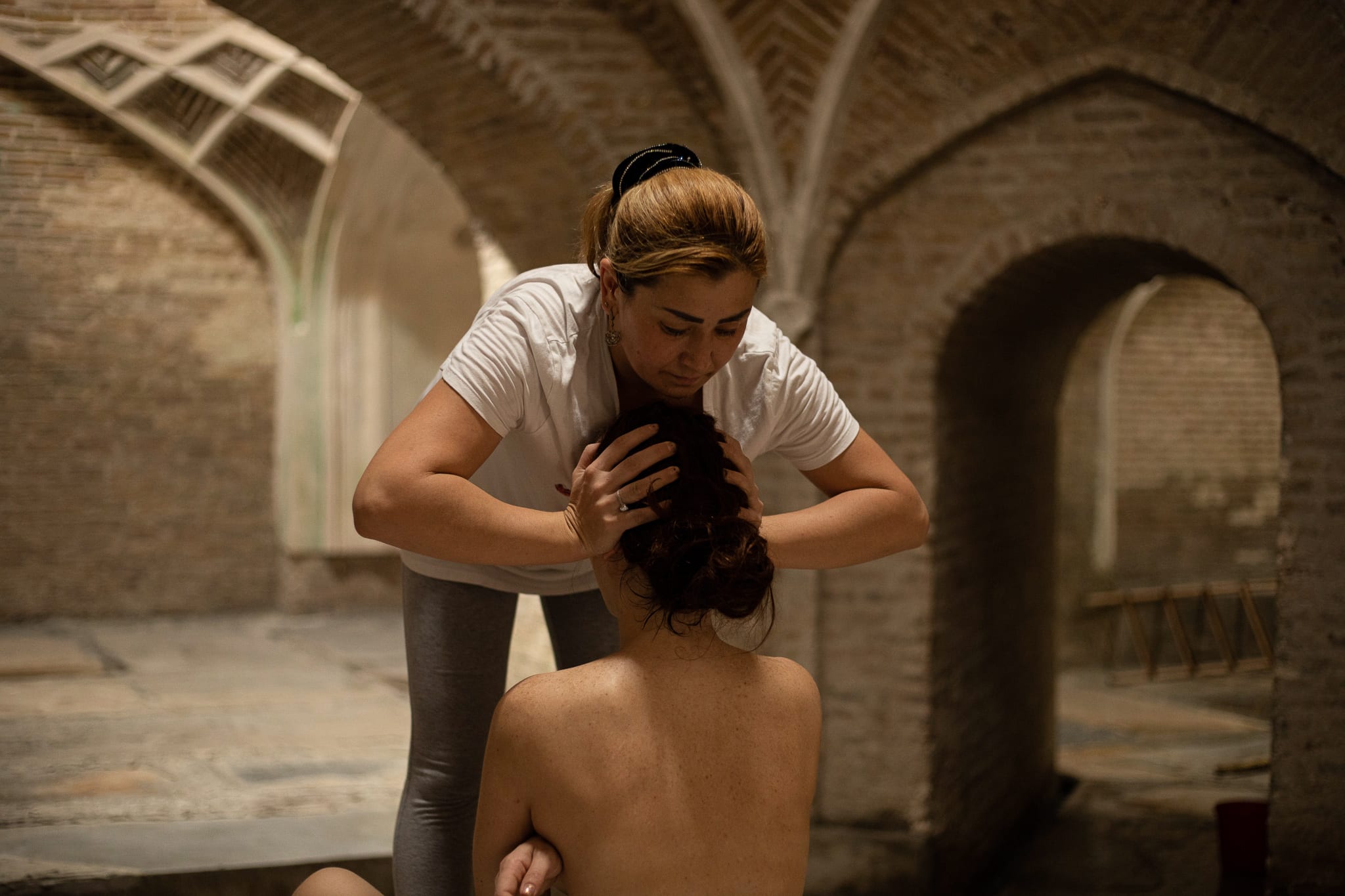
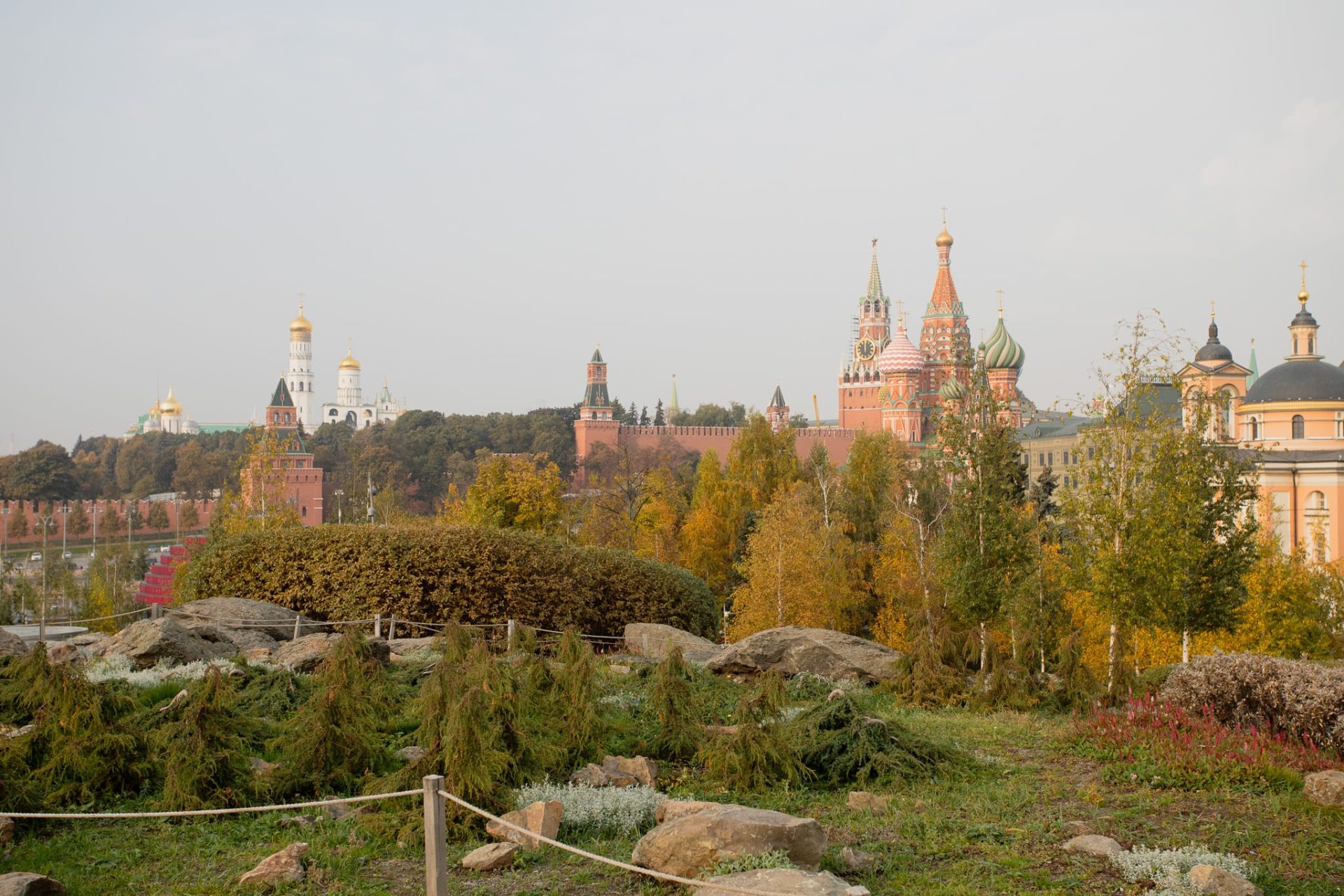
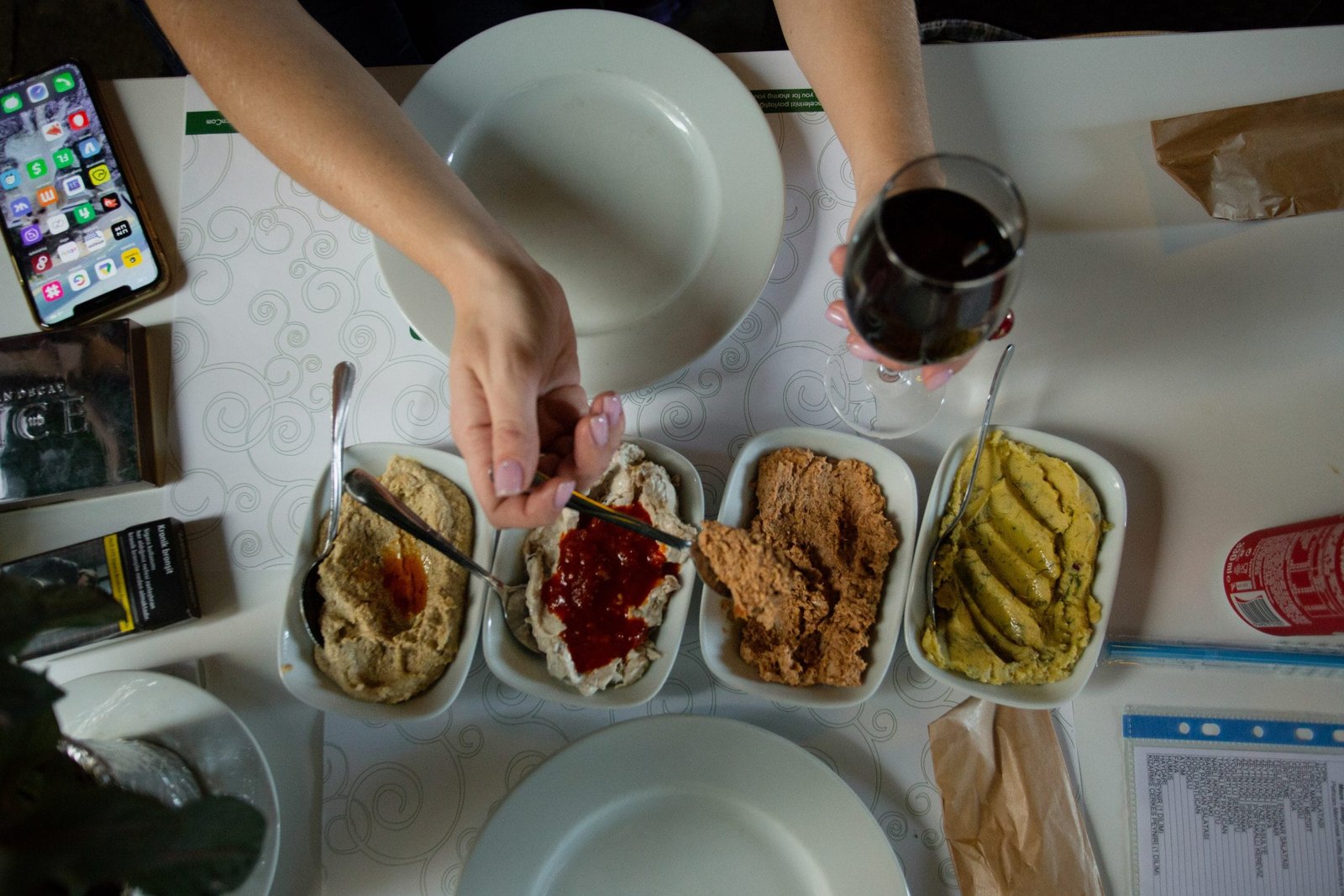
Leave a Reply